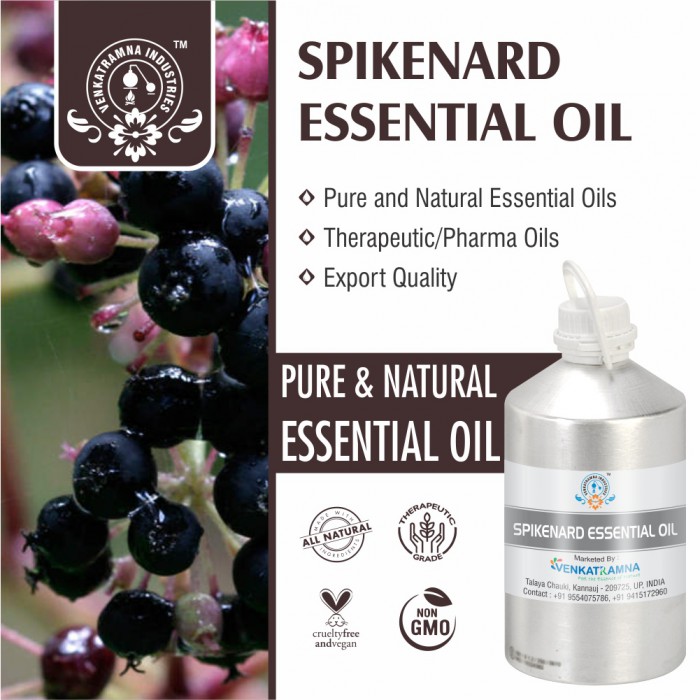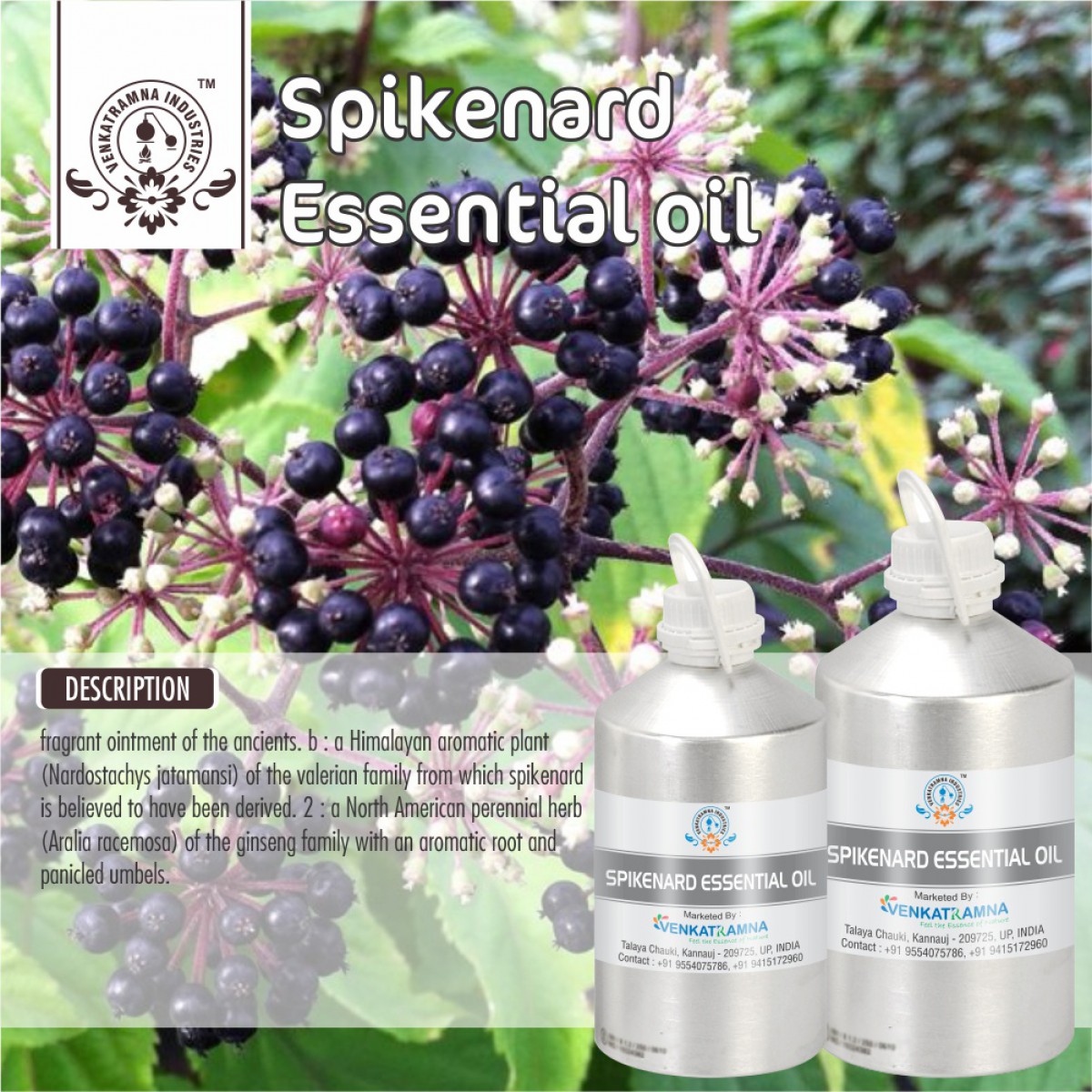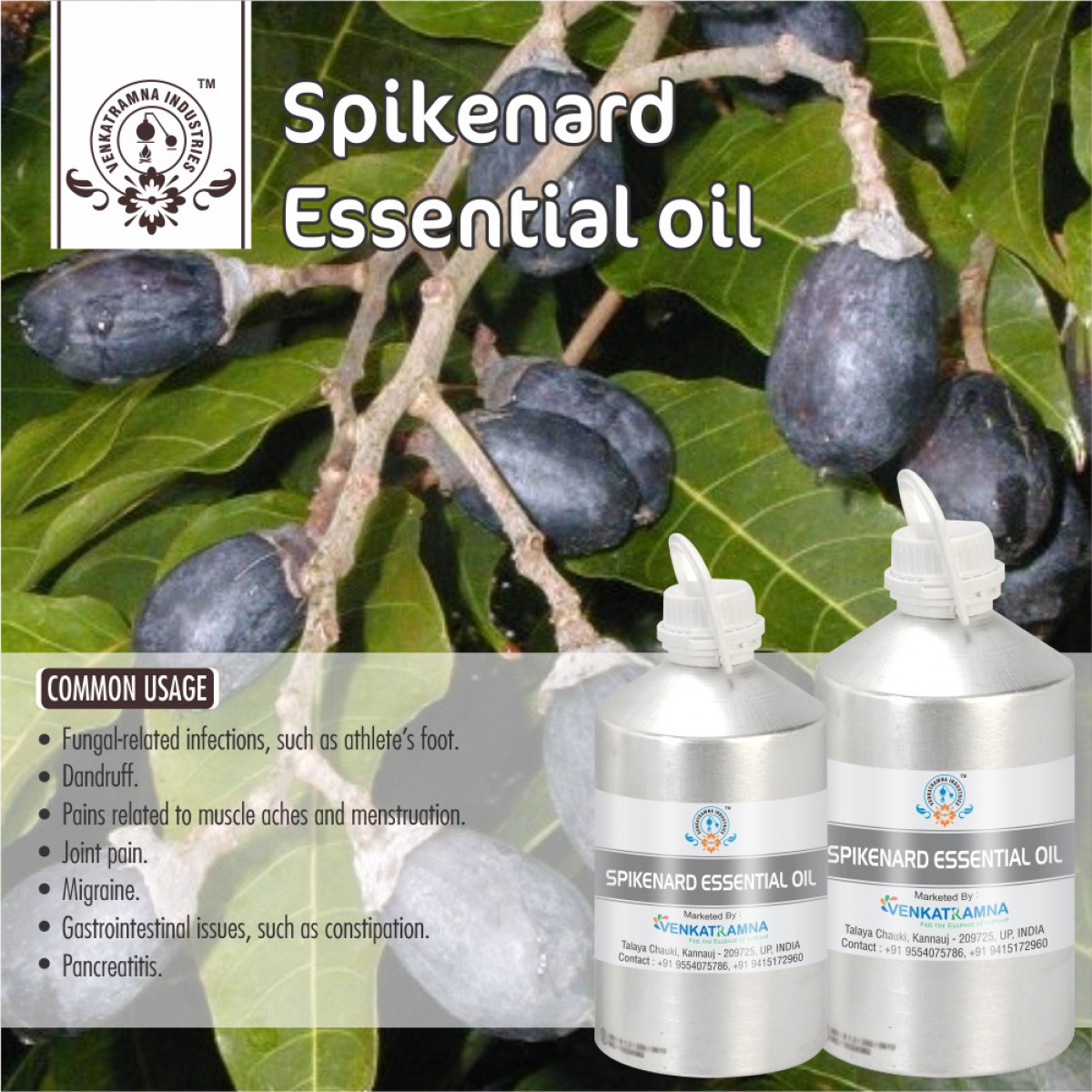Botanical Name: Nardostachys jatamansi Common name: Spikenard, Jatamansi Read More
|
Botanical Name: |
Nardostachys
jatamansi |
|
Common name: |
Spikenard,
Jatamansi |
|
Plant
family: |
Valerianaceae |
|
Genus: |
Nardostachys |
|
Appearance/Color: |
A slightly
viscous golden yellow to greenish liquid. |
|
Odor: |
A base note with a
strong aroma, Spikenard Essential Oil has a harsh, earthy, woody smell that
is slightly musty. |
|
Blends With: |
Lavender,
Patchouli, Pine, Vetiver and Spice Oils. |
|
Origin: |
Nepal |
|
Source: |
Root |
|
Method
of Extraction: |
Steam
Distillation |
Jatamansi (Nardostachys Jatamansi) is a
perennial herb about 10-60cm in height having long stout, rhizomes root. The
leaves are elongated and spatulated while few leaves are sessile, oblong or sub
ovate. The flowers are pink bell shaped. Its roots are thick and has too many
hairs.
Due to its thick roots and too many hairs
(jata in Sanskrit) it has the name Jatamansi. It consists of two words: Jata
means dread locks and manasi indicates towards human. It is wonderful medicinal
herb used since the ancient times for many medicinal purposes. Its dried
rhizomes and roots are the main medicinal parts used in preparation. Its
Spikenard rhizomes (underground stems) can be crushed and distilled into an
intensely aromatic amber color essential oil which is very thick in
consistency. This oil is used as a perfume, incense, a sedative and an herbal
medicine said to fight insomnia, birth difficulties and other minor ailments.
It has various therapeutic actions on body. It
is a natural nervine tonic and a memory enhancer, which has calming, peaceful
and relaxation features. It is used for natural support for mental disorders
like schizophrenia and epilepsy, stress, anxiety and depression and induces
healthy sleep. Healthy sleep mean- without any addiction and depression effect.
It is available in market in different forms like oil, powder. It contains various chemical constituents - ursolie acid, acacin, kanshone A, octacosanol, nardosinone, nardosinonediol, aristolen-9beta-ol, oleanolic acid, and beta-sitosterol. It also contains nardal, jatamansic acid, jatamol A &B, spirojatamol, terpenoid, neolignans, taraxerone, valeranone, chlorogenic acid, ferulic acid, syringic acid and photocatechuic acid.
DISCLAIMER
The complete range of conditions
or methods of use are beyond our control therefore we do not assume any
responsibility and expressly disclaim any liability for any use of this
product. Information contained herein is believed to be true and accurate however,
all statements or suggestions are made without warranty, expressed or implied,
regarding accuracy of the information, the hazards connected with the use of
the material or the results to be obtained from the use thereof. Compliance
with all applicable federal, state, and local laws and local regulations
remains the responsibility of the user.
The FDA has not evaluated the
statements on this website. No claims are made by Venkatramna Industries as to
the medicinal value of any products from vriaroma.com or by us. The information
presented here is for educating our customers about the traditional uses of
essential oils and is not intended to diagnose, treat, cure, or prevent any
disease. You are responsible for understanding the safe application of these products.
If you have any questions, please call or email us for further information.
As per NAHA guidelines, New Directions Aromatics
(NDA) does not recommend the ingestion of essential oils. It is imperative to
consult a medical practitioner before using Essential Oils for therapeutic
purposes. Pregnant and nursing women and those taking prescription drugs are
especially advised not to use this product without the medical advice of a
physician. The oil should always be stored in an area that is inaccessible to
children, especially those under the age of 7.
The plant has a rich history of
medicinal use and has been valued for centuries in Ayurvedic (Indian) and Unani
(ancient Greco-Arab) systems of medicine. The rhizomes of the plant are used in
the Ayurvedic system of medicine as a bitter tonic, stimulant, antispasmodic, and
to treat hysteria, convulsions, and epilepsy. The root has been medically used
to treat insomnia and blood, circulatory, and mental disorders. Some
preparations of the plant have been used as a heptotonic, cardiotonic,
analgesic, and diuretic in the Unani system of medicine. The plant is of
economic importance and has been used to produce perfumes and dyes.
It has been traditionally used in
the Ayurvedic system of medicine as a neuroprotective agent for the treatment
of hysteria, epilepsy, insomnia, and convulsions. The rhizome extract of this
plant has been studied for its beneficial effect on the nervous system. It is
also known to possess an antidepressant activity that helps in the management
of psychological disorders like depression, anxiety disorders, mental fatigue,
panic disorders, and obsessive-compulsive disorder.
COMMON
USAGE
·
Neuroprotective
·
Anti-stress
·
Anti-depressant
·
Anxiolytic
·
Anti-cataleptic
·
Anti-seizure (Anticonvulsant)
·
Antispasmodic
·
Anti-inflammatory
·
Antihypertensive
·
Deodorant
·
Antibacterial
·
Antifungal (Jatamansi oil)
·
Carminative
·
Stomachic
·
Heart Tonic
·
Mild Diuretic (by exerting stimulant action on
kidneys)
·
Anti-histaminic
·
Mild laxative
Ingredients:
|
S.No |
Key Constituents |
Strength (%) |
|
1 |
Nardol |
10.1 |
|
2 |
Formic acid |
9.4 |
|
3 |
a-selinene |
9.2 |
|
4 |
Dihydro-b-ionone |
7.9 |
|
5 |
Nardol isomer |
4.8 |
|
6 |
Selinene isomer |
3.9 |
|
7 |
Propionic acid |
3.4 |
|
8 |
b-caryophyllene |
3.3 |
|
9 |
cubebol |
2.9 |
|
10 |
a-gurjunene |
2.5 |
|
11 |
Selinene isomer |
2.2 |
|
12 |
7-hexadecene |
2.0 |
|
13 |
(E)-nerolidol |
1.9 |
|
14 |
Calamenene |
1.1 |
|
15 |
Epoxy-ledene |
1.0 |
Safety Summary
·
Hazards: Not
known.
·
Cautions: Not
known.
Organ Specific Effects
·
Adverse skin reaction: Not Known.
·
Systemic
Effects
·
Acute
Toxicity: No information
found.
·
Antioxidant/pro-oxidant activity: Mint oil significantly scavenged DPPH and OH
radicals
·
Carcinogenic/anti carcinogenic potential: No data found for mint oil or piperitone
oxide. The oil contains no known carcinogens.
·
Mobility: The product is insoluble in water.
·
Dispose of in compliance with all local and
national regulations.





 MSDS-Spikenard.pdf
MSDS-Spikenard.pdf




